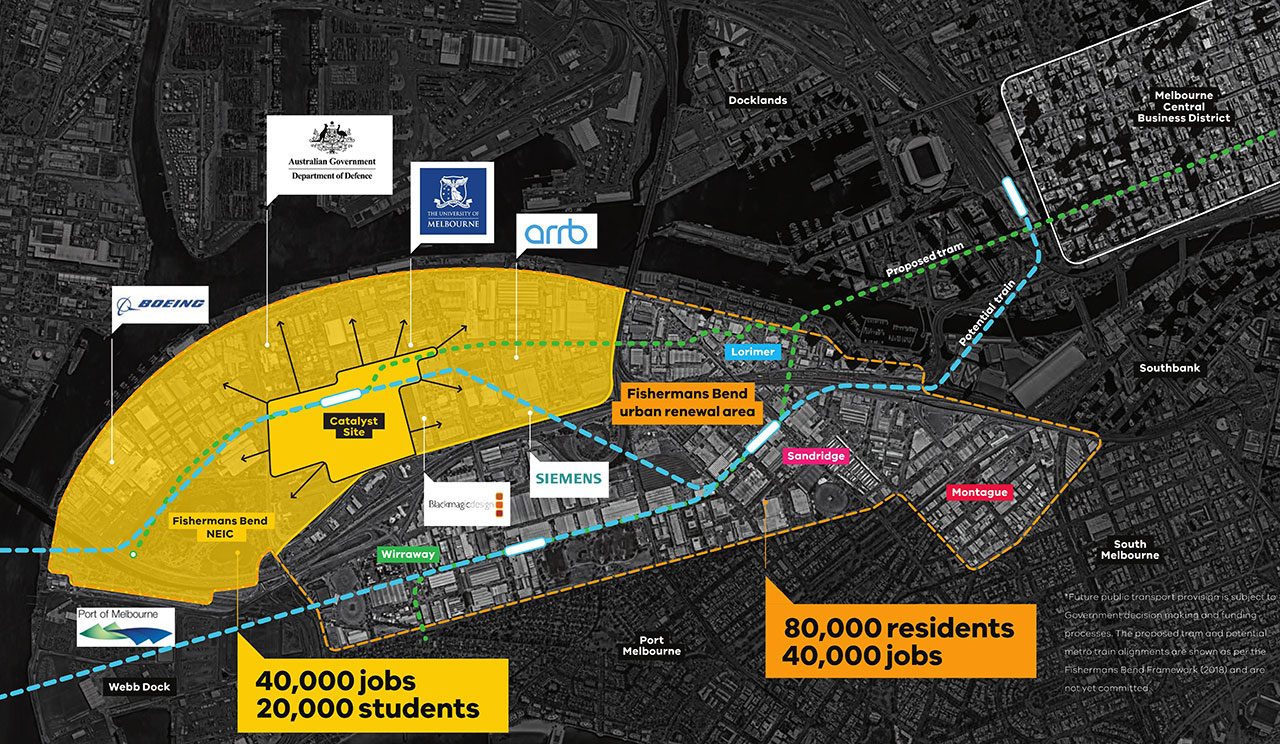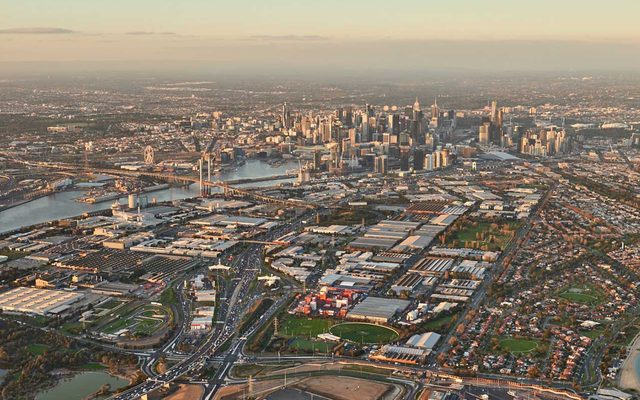This article is from the Australian Property Journal archive
AUSTRALIA’S largest urban renewal project, the Fishermans Bend precinct, has secured a major coup with The University of Melbourne’s new Engineering and Design innovation campus.
The Victorian government has introduced interim planning controls for the Fishermans Bend precinct to guide development and deliver on the vision of Advancing Manufacturing, the government has introduced interim planning controls for the Fishermans Bend National Employment and Innovation Cluster (NEIC).
The interim controls will be in place while a more detailed precinct plan and permanent controls are finalised.
Minister for Business Precincts Martin Pakula yesterday launched the NEIC, outlining five priorities to build a centre of high-value industries and jobs at the precinct.
The first priority is to bring to life the heart of the Fishermans Bend Innovation Precinct – the former General Motors Holden site on Salmon Street. Investment is flowing to transform this critical site, with the first stage of redevelopment backed by a $179.4 million investment in the Victorian Budget 2021/22.
The government bought the former GM site in 2017.
Other priorities include improving connectivity through new transport options and civic boulevards as well as a “green spine” and cycle connection corridor along Turner Street, being delivered in partnership with the City of Melbourne in the coming year.
Planning Richard Wynne also yesterday approved The University of Melbourne’s proposal for a new Engineering and Design innovation campus – the tertiary education provider will be one of the precincts’ next major tenants.
Set to open in 2025, the campus will feature world-class heavy engineering and large fabrication testing and prototyping facilities, purpose-built for the Faculty of Engineering and Information Technology and the Faculty of Architecture, Building and Planning.
Pakula said the Fishermans Bend campus will create a place for researchers, students and industry to come together for industrial-scale exploration to innovate solutions in energy, affordable housing, sustainable transport and more.
“Powered by new technologies and world-leading engineering and design, Fishermans Bend presents a once-in-a-generation opportunity to build a precinct that creates jobs for Victorians and produces solutions for the world.” Pakula said.
Fishermans Bend Development Board Chair Meredith Sussex said the NEIC is a global opportunity and partnerships with the likes of the University of Melbourne and the Defence Science and Technology Group are critical steps in realising that ambition.
Fishermans Bend is Australia’s largest urban renewal project, covering 480 hectares that will be home to 80,000 people and 80,000 jobs by 2050.
Global firms including Boeing and Siemens are already established in Fishermans Bend, the NEIC is expected to be home to at least 40,000 jobs and over 20,000 students by 2050 across key industries including aerospace, transport, defence, creative industries and clean energy.




